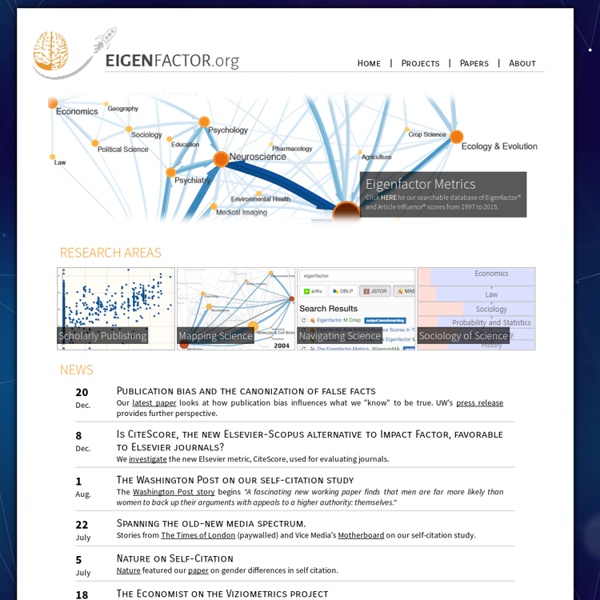



Our adventures in culturomics Peter Aldhous, Jim Giles and MacGregor Campbell, reporters (Image: Michael St. Maur Sheil/Corbis) Here in New Scientist's San Francisco bureau we can't resist an invitation to participate in an entirely new field of research. So after reading about the first analyses of word usage over time in Google's mammoth database of 5 million digitised books, we were excited to learn that the search giant has provided a neat tool, the Books Ngram Viewer, to perform your own "culturomic" studies.
INFSRefs Information Systems PublicationsA Classification Version 0.8 of 10 March 1995 (c) Roger Clarke, Australian National University, 1995 This document may be copied, provided that it is copied in its entirety, including this notice and the qualifications in the preliminary text. Preamble There are enormous difficulties in classifying and evaluating the kinds of journals and proceedings in which information systems literature appears.
Oxford Open Oxford Open OUP Supports Open Access Oxford University Press (OUP) is mission-driven to facilitate the widest possible dissemination of high-quality research. We embrace both green and gold open access (OA) publishing to support this mission. A Proven Track Record of Success OUP has been publishing OA content since 2004. Digital Images Collections Guide Digital Image Collections Guide Updated - 12/5/2013 The Digital Images Collections Guide has continued going strong after 2 years! Thank you for the support. After two years, the Guide was in need of some TLC, so I have recently concluded a reconciliation project of the resources cited to insure that these websites are still live, that they navigate to the appropriate specific pages, and that these resources are indeed (generally speaking) digital image collections. To that end, I removed the relative few websites that have gone dark (good-night NBII LIFE), updated the links on a ton of collections that moved to new URL's, and removed a handful that I believe to be unrelated. I also did my best to maintain the few collections that have been added by community members over the past two years.
Culturomics research uses quarter-century of media coverage to forecast human behavior "Culturomics" is an emerging field of study into human culture that relies on the collection and analysis of large amounts of data. A previous culturomic research effort used Google's culturomic tool to examine a dataset made up of the text of about 5.2 million books to quantify cultural trends across seven languages and three centuries. Now a new research project has used a supercomputer to examine a dataset made up of a quarter-century of worldwide news coverage to forecast and visualize human behavior. Using the tone and location of news coverage, the research was able to retroactively predict the recent Arab Spring and successfully estimate the final location of Osama Bin Laden to within 200 km (124 miles).
Scholarly Publishing - MIT Libraries Is it true that Open Access means an article is not copyrighted? No. Choosing to publish through an open access channel does not mean the article is not copyrighted. The same options exist when publishing through an open access channel as when an article is published through a controlled-access (or traditional subscription) model: the author may in some cases be able to retain copyright, or may be required to grant the journal publisher copyright. In 500 Billion Words, a New Window on Culture The digital storehouse, which comprises words and short phrases as well as a year-by-year count of how often they appear, represents the first time a data set of this magnitude and searching tools are at the disposal of Ph.D.’s, middle school students and anyone else who likes to spend time in front of a small screen. It consists of the 500 billion words contained in books published between 1500 and 2008 in English, French, Spanish, German, Chinese and Russian. The intended audience is scholarly, but a simple online tool allows anyone with a computer to plug in a string of up to five words and see a graph that charts the phrase’s use over time — a diversion that can quickly become as addictive as the habit-forming game Angry Birds.
Culturomics Further reading[edit] References[edit] External links[edit]